D-Link Omna 180 Cam HD review - The only HomeKit-enabled security camera you can get today
The only shipping HomeKit-enabled camera
The Omna 180 Cam HD (model: DSH-C310) is unlike any other home security cameras that D-Link has made. And I’m not just referring to its silver-gray cylindrical metal housing, which already is a departure from the black or white plastic that’s used on the company’s other network cameras. A lot of the Omna 180’s fame stems from the fact that it’s a HomeKit-enabled camera. In fact, it’s one of two HomeKit cameras confirmed to date, and at the time of this writing, the only one that has shipped.
For the uninitiated, HomeKit is Apple’s framework for communicating with and controlling connected accessories in the home. An accessory that wears the “Works with Apple HomeKit” badge, like the Omna 180, means that it has been tested and approved by Apple, and thus can be controlled securely with Apple’s own Home app that’s been been bundled with iOS since iOS 10. This whole HomeKit affair, which also requires an Apple-certified chip in the hardware, is the reason why D-Link has created a separate Omna range and a new app that goes by the same name.

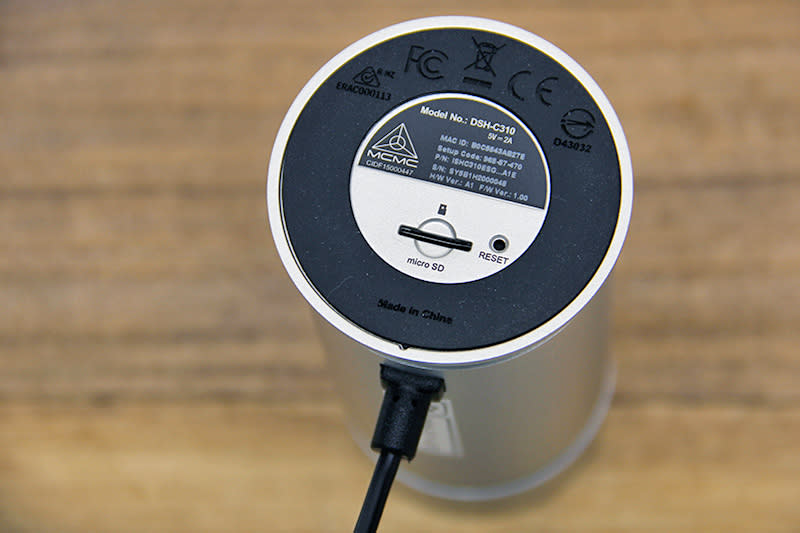

Setup is a breeze
The advantage of this Apple influence is evident right from the get-go. A quick scan of the HomeKit code is all that was needed to pair the Omna 180 with my iPhone and get it onto my network. This is in stark contrast to the 15-minute spells that I typically spent when configuring D-Link’s other cameras, which often involved switching between different networks and/or a trip to a web interface.
Once set up, the Omna 180 appeared in the Apple Home app on my iPhone, and all my other iOS devices signed into the same iCloud account. Just like any other HomeKit hardware accessory, it can be moved into a different “room” in the app for better organization. A quick glance of the thumbnail, which is an image grab of what the camera is seeing that's refreshed every 60 seconds, is usually all I need to do to find out if everything’s okay; and if I need to see a bigger picture or activate the built-in microphone (the camera supports 2-way audio), I can tap it to go full-screen and reveal more controls.
(By the way, the camera’s motion sensor appeared as a separate device in the Home app, but that isn’t uncommon for multi-function home automation devices. When I moved it or the camera to another room, the other would follow, which makes sense.)
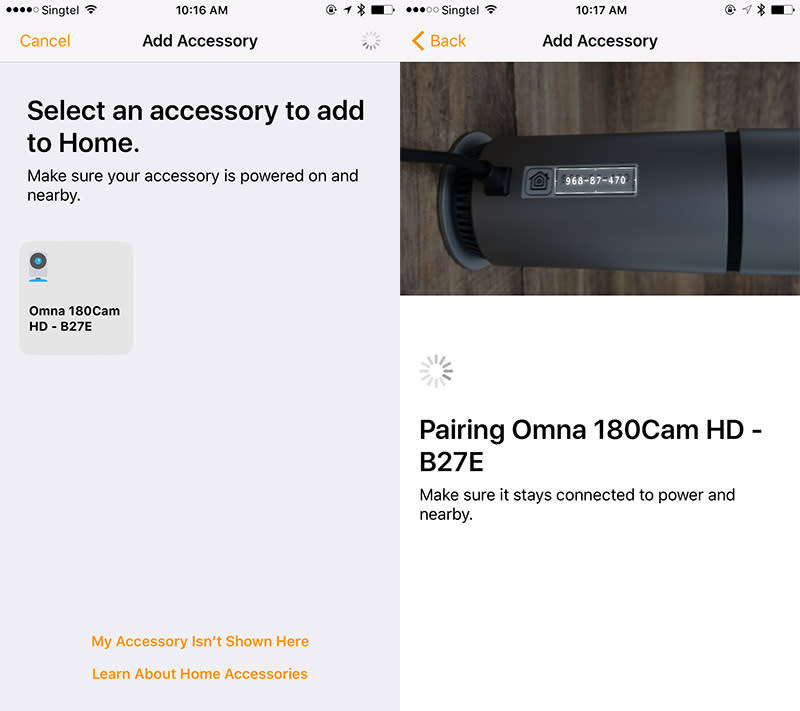
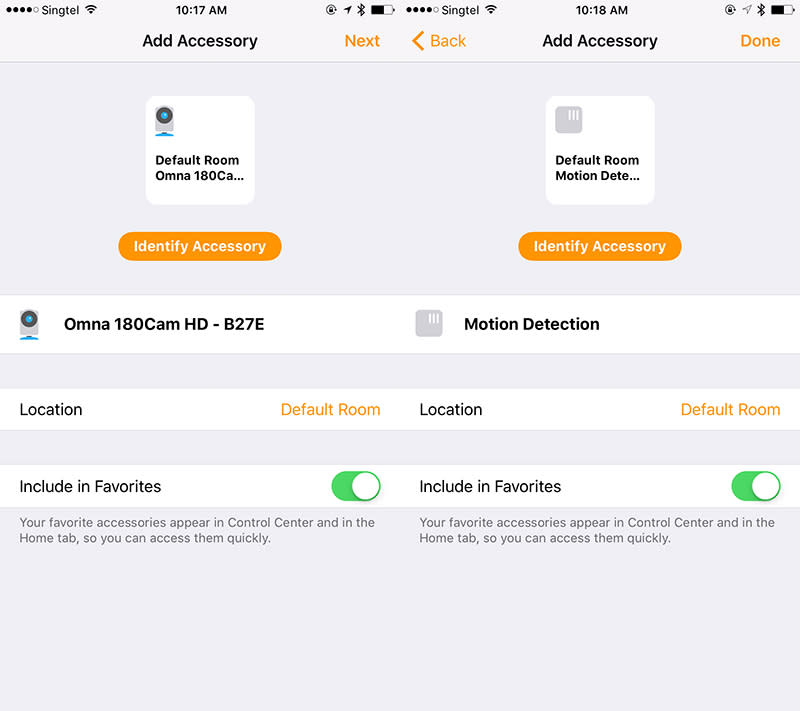
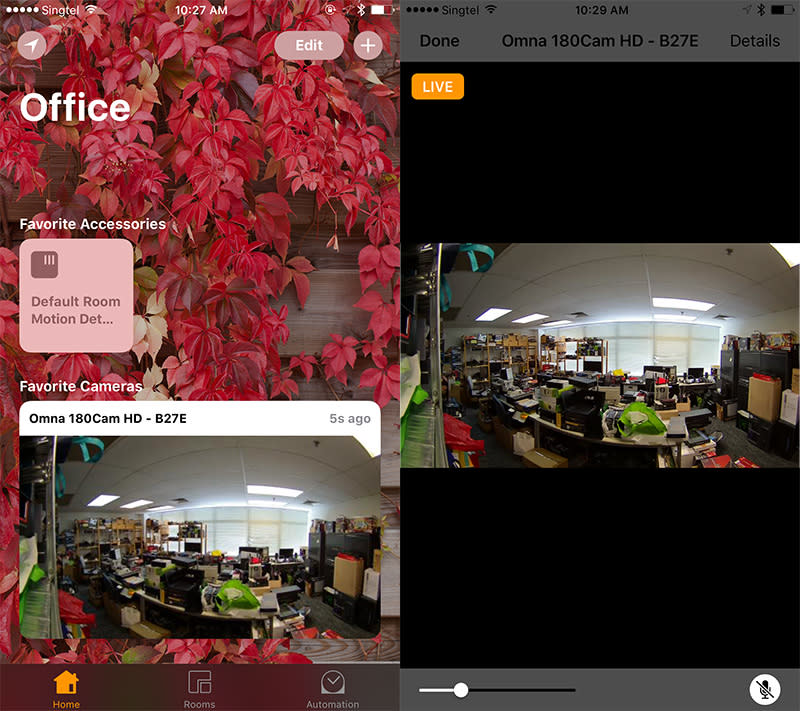
Home app or Omna app?
While I can also fire up D-Link’s own Omna app to see the live stream, I use it more for advanced settings not found in the Home app. Here’s where I update the camera’s firmware, playback the video clips recorded to the camera’s microSD card, and set up motion detection parameters. For the latter, the camera divides the room into a 4-by-4 grid, allowing me to choose the parts of the room that I want motion detection to cover. Your usage pattern will vary of course, but I’d have preferred an 8-by-8 grid, or better yet, a tool that lets me draw my own motion zones.
Another reason that I don't use the Omna app much for viewing the live stream is that, unlike the Apple Home app, the volume and microphone controls don't appear when the phone is in landscape mode. (The image goes fullscreen, that's it.) But D-Link's app does allow me to grab a still image of the stream and save it to the camera roll, something that the Home app can't do. In short, neither app is perfect.
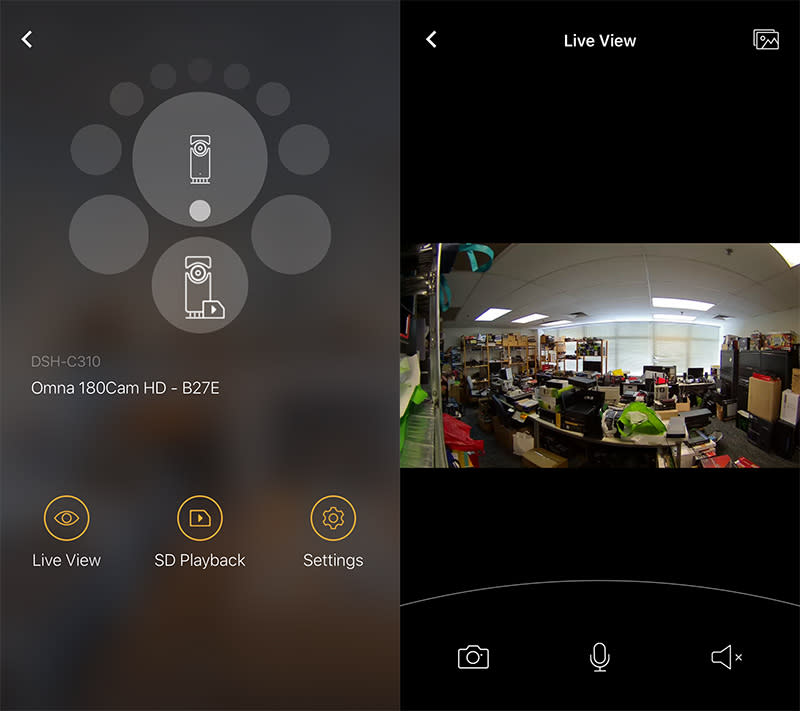

Good, but not great, performance
In the course of my testing, I found related push alerts to come in timely. If anything, I hope that HomeKit is able to tell that I’m at home (maybe through the presence of my iPhone on the network) and “disarm” the motion sensor or turn off the camera’s push notifications. As it stands now, unless I manually turn off notifications for the motion sensor, my iPhone will buzz non-stop when I’m in the same room as the camera.
Being a HomeKit-enabled device also lets the Omna 180 integrate more seamlessly into iOS and do Apple-ly stuff. For example, I can ask Siri to check on the camera’s status, and it will bring up the live feed. I can also query the motion sensor’s status, and Siri will tell me if any activity is detected. I can also configure simple automation recipes in the Home app. For example, I’ve one that will turn on a light when motion is detected.
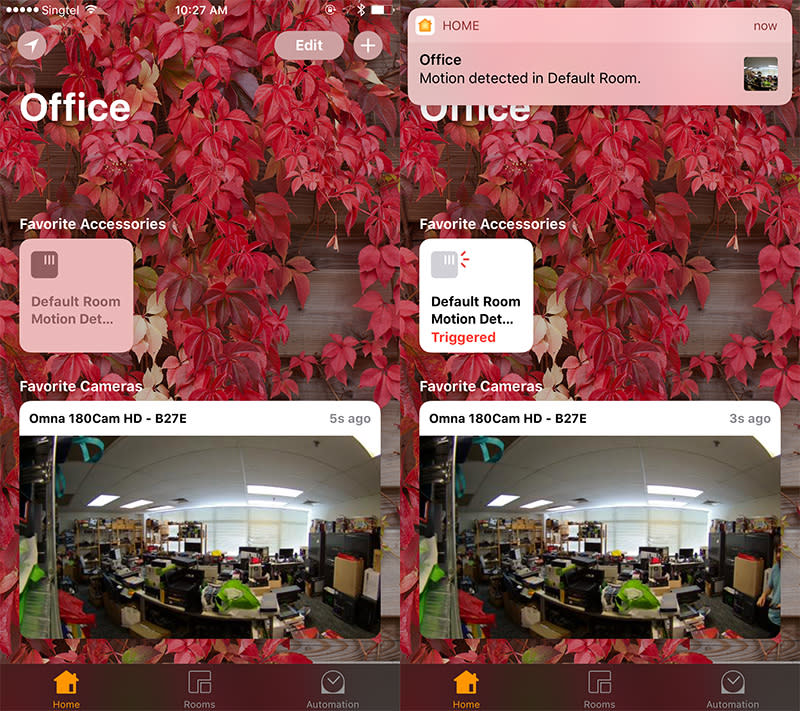
HomeKit’s stringent security standards can create some inconveniences, too. For example, to be able to control the camera away from home, I’ve to leave either an Apple TV (4th-gen or later) running tvOS 10.1 or later or an iPad running iOS 10.1 or later at home to act as a hub.
Finally, I found the Omna 180’s picture quality to be comparable to that from D-Link’s non-HomeKit flagship 1080p camera, the DCS-2630L, which is to say it’s good but not great. Its 180-degree field of view works best if you want to cover a room end to end; and even though there’s a bit of distortion at both ends, I never found it to be a problem. Night vision worked decently in my tests too: as long as the subject isn’t over 3 meters away from the camera, you should be able to see it pretty clearly in the dark. My biggest gripe is that there’s no zoom function, not even digital zoom. Since the live stream is almost always going to be viewed on a phone screen, this omission (on a 1080p camera, no less) is very puzzling. Sound detection is another common IP camera feature that's missing on the Omna 180.
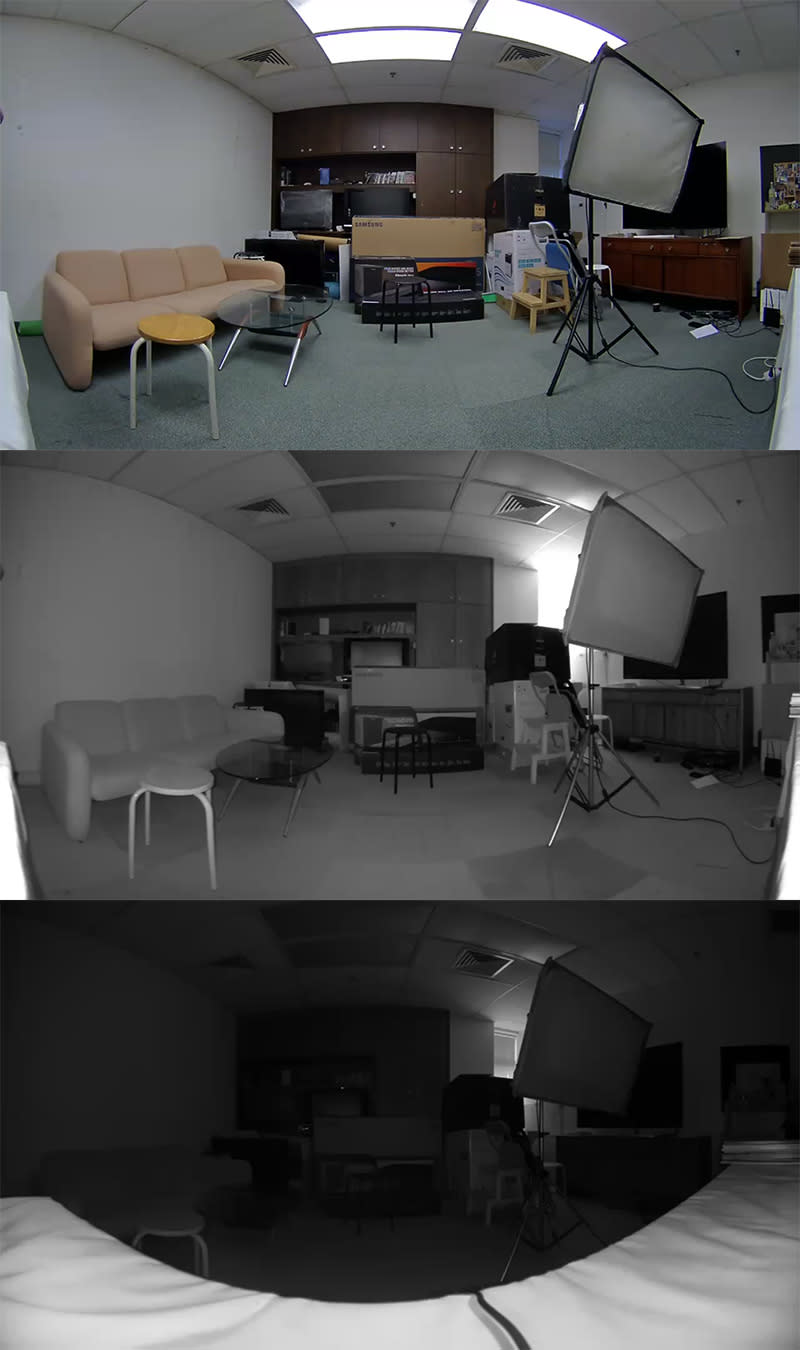
Conclusion
From a hardware point of view, D-Link has gotten most things right: the camera is well built, its 1080p sensor provides sufficient details, and the 180-degree lens lets you see more things without resorting to a pan/tilt camera. But since there’s no zoom function, in practice, it works better as, say, a living room surveillance camera than a baby monitoring camera. Personally, I’m okay with saving the video clips to the onboard microSD card, but I can understand that for security reasons others may prefer a network storage or cloud storage option. Hopefully, auto upload to iCloud would be an option when the next version of iOS or HomeKit comes around.
If you use an iPhone or iPad (there's no Omna app for Android) and are looking for a secure and an easy to use home surveillance camera, the Omna 180 is a decent choice. The argument for it only gets stronger if you need the HomeKit integration. It may sound a bit strange, but the fact is the Omna 180 will get better when Apple’s HomeKit gets better, when the Home app gets more polished, and when you’ve more HomeKit-enabled devices that it can work with for home automation. Put another way, if HomeKit isn't the main reason why you're looking at this camera, then you’d be better served by looking at D-Link’s other network cameras.
The D-Link Omna 180 Cam HD is now available on the online Apple Store for S$319. You can also find it at the Apple Orchard Road store and retail outlets such as Challenger.




